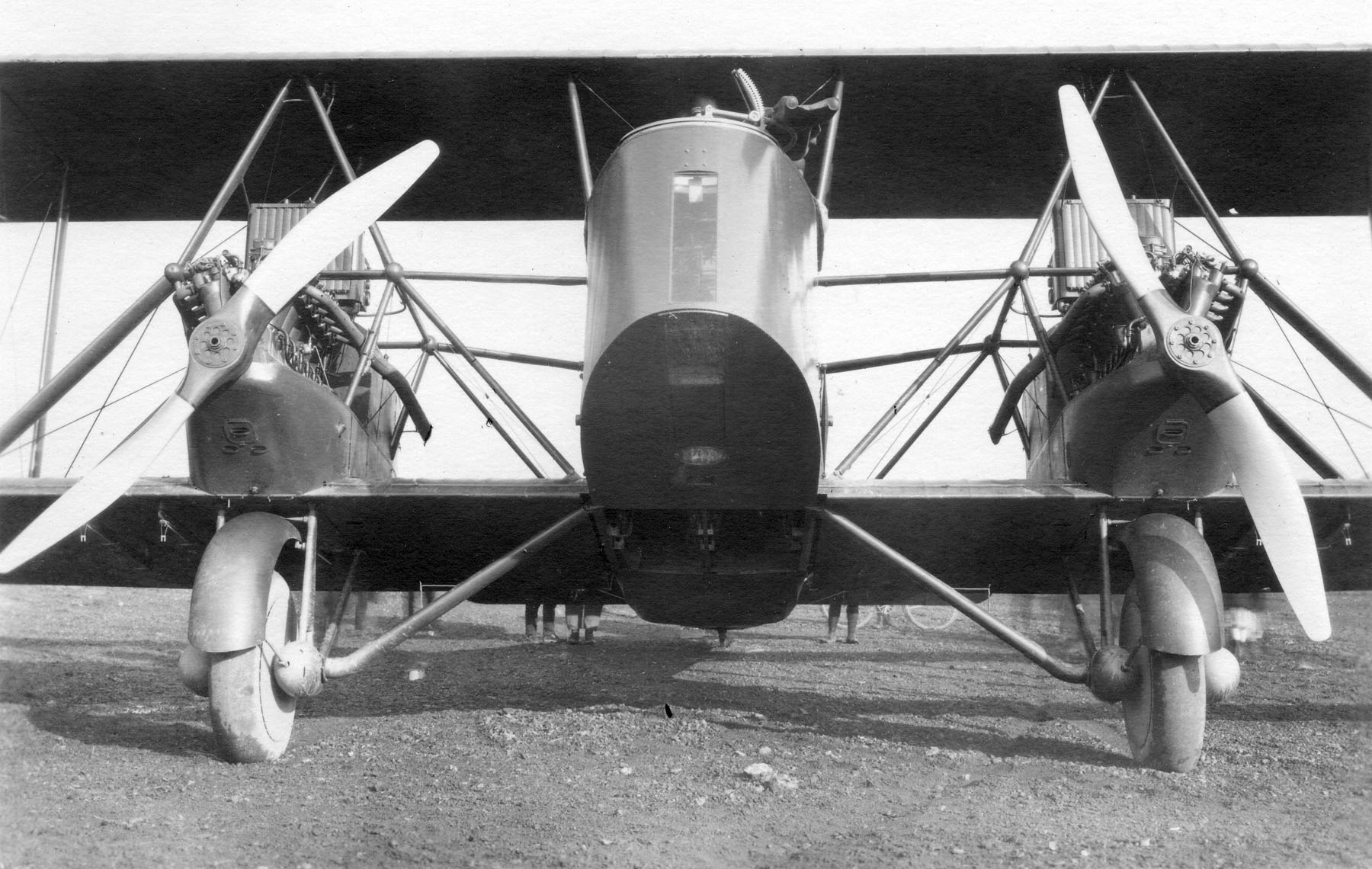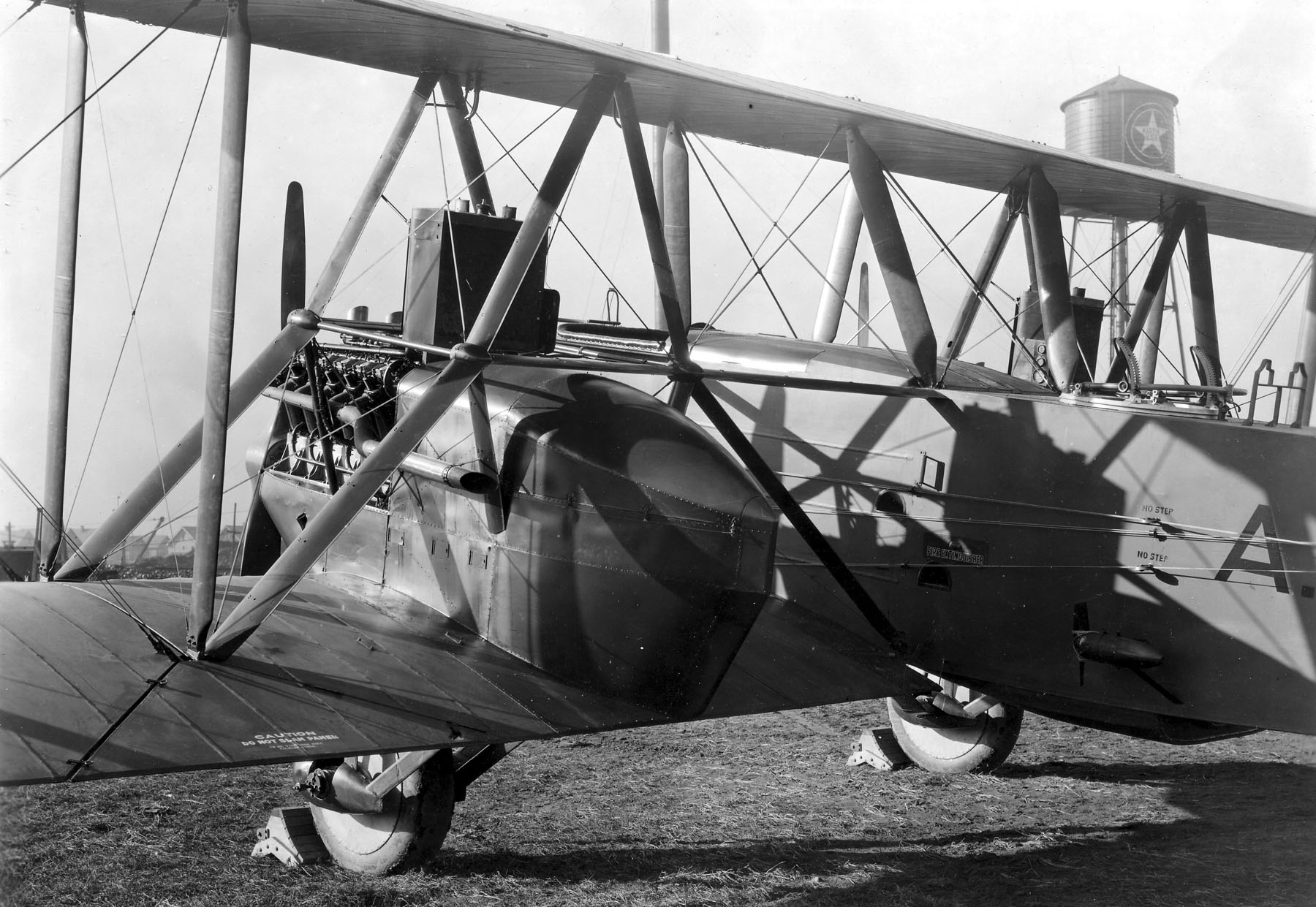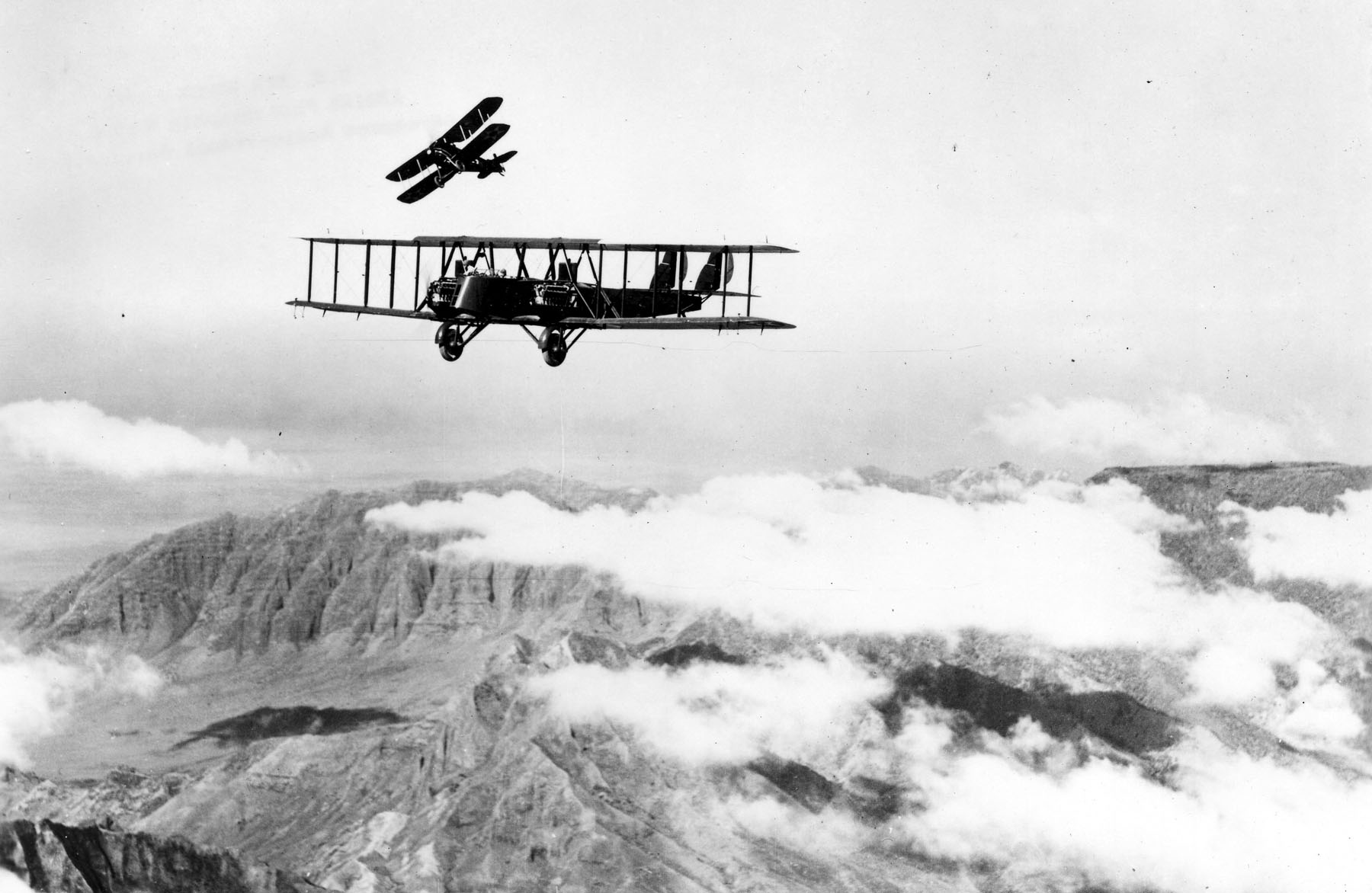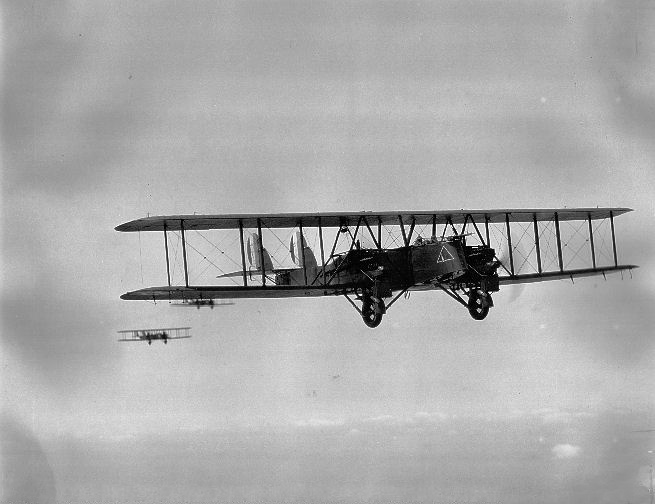Martin NBS-1 on:
[Wikipedia]
[Google]
[Amazon]


 The Martin NBS-1 was a military aircraft of the
The Martin NBS-1 was a military aircraft of the

 ;
*United States Army, Air Service and Air Corps
**1st Day Bombardment Group,
;
*United States Army, Air Service and Air Corps
**1st Day Bombardment Group, 
Martin MB-2 (converted to NBS-1) fact sheet, NMUSAFMartin NBS-1 fact sheet, NMUSAFReference to micarta bakelite propeller
* ttps://web.archive.org/web/20130404183235/http://www.nationalmuseum.af.mil/factsheets/factsheet.asp?id=330 Martin MB-2 (NBS-1) Exhibit page, National Museum of the United States Air Force {{LWF aircraft Martin NBS-1 NBS-1 Biplanes Aircraft first flown in 1920 Twin piston-engined tractor aircraft Aircraft with fixed conventional landing gear


 The Martin NBS-1 was a military aircraft of the
The Martin NBS-1 was a military aircraft of the United States Army Air Service
The United States Army Air Service (USAAS)Craven and Cate Vol. 1, p. 9 (also known as the ''"Air Service"'', ''"U.S. Air Service"'' and before its legislative establishment in 1920, the ''"Air Service, United States Army"'') was the aerial warf ...
and its successor, the Army Air Corps. An improved version of the Martin MB-1, a scout-bomber built during the final months of World War I
World War I or the First World War (28 July 1914 – 11 November 1918), also known as the Great War, was a World war, global conflict between two coalitions: the Allies of World War I, Allies (or Entente) and the Central Powers. Fighting to ...
, the NBS-1 was ordered under the designation MB-2 and is often referred to as such. The designation NBS-1, standing for "Night Bomber-Short Range", was adopted by the Air Service after the first five of the Martin bombers were delivered.
The NBS-1 became the standard frontline bomber of the Air Service in 1920 and remained so until its replacement in 1928–1929 by the Keystone Aircraft
Keystone Aircraft Corporation was an early American airplane manufacturer.
History
Headquartered in Bristol, Pennsylvania, the company was formed as "Ogdensburg Aeroway Corp" in 1920 by Thomas Huff and Elliot Daland, but its name was quickly c ...
series of bombers. The basic MB-2 design was also the standard against which prospective U.S. Army bombers were judged until the production of the Martin B-10
The Martin B-10 is a bomber aircraft designed by the Glenn L. Martin Company. It was the first all-metal monoplane bomber to be regularly used by the United States Army Air Corps, having entered service in June 1934.Jackson 2003, p. 246. It wa ...
in 1933.
Design and development
The NBS-1 was a wood-and-fabricbiplane
A biplane is a fixed-wing aircraft with two main wings stacked one above the other. The first powered, controlled aeroplane to fly, the Wright Flyer, used a biplane wing arrangement, as did many aircraft in the early years of aviation. While ...
without staggered wings, employing twin rudders on a twin vertical tail. Its two Liberty 12-A engines sat in nacelle
A nacelle ( ) is a streamlined container for aircraft parts such as Aircraft engine, engines, fuel or equipment. When attached entirely outside the airframe, it is sometimes called a pod, in which case it is attached with a Hardpoint#Pylon, pylo ...
s on the lower wing, flanking the fuselage. Ordered under the company designation MB-2 in June 1920, the NBS-1 was an improved larger version of the Martin MB-1 bomber built by the Glenn L. Martin Company
The Glenn L. Martin Company, also known as The Martin Company from 1917 to 1961, was an American aircraft and aerospace industry, aerospace manufacturing company founded by aviation pioneer Glenn L. Martin. The Martin Company produced many impo ...
in 1918, also known as the GMB or Glenn Martin Bomber. The first flight of the MB-2 took place 3 September 1920.
In addition to more powerful engines, larger wings and fuselage, and simplified landing gear, the NBS-1 also had a unique folding wing system, hinged outside the engine nacelles to fold backward for storage in small hangars. Unlike the MB-1, whose engines were mounted between the wings in a fashion similar to the German Staaken R.VI Riesenflugzeug
A ''Riesenflugzeug'' (plural ''Riesenflugzeuge'', German for "giant aircraft"), sometimes colloquially referred to in English as an R-plane, was any member of a class of large World War I Imperial Germany, German bombers, possessing at least th ...
, the engines of the NBS-1 were fixed to the lower wing over the landing gear.
The MB-2 was designed as a night bomber and except for a greater load capacity, had reduced performance characteristics compared to its MB-1 predecessor. The first 20 (five MB-2s and 15 NBS-1s) were ordered from the Martin Company, which recommended a further 50 be produced to help its struggling financial condition. However the design was owned by the U.S. Army and subsequent contracts for 110 bombers were awarded by low bid to three other companies: Curtiss Aircraft (50 ordered); L-W-F Engineering Company of College Point, New York (35); and Aeromarine Plane and Motor Company of Keyport, New Jersey (25).
The engines of the last 20 bombers of the Curtiss order came equipped with turbosupercharger
In an internal combustion engine, a turbocharger (also known as a turbo or a turbosupercharger) is a forced induction device that is powered by the flow of exhaust gases. It uses this energy to compress the intake air, forcing more air into th ...
s manufactured by General Electric
General Electric Company (GE) was an American Multinational corporation, multinational Conglomerate (company), conglomerate founded in 1892, incorporated in the New York (state), state of New York and headquartered in Boston.
Over the year ...
, the first such modification made in production quantity. Although enabling the NBS-1 to reach an altitude of over 25,000 ft (7,650 m), the turbosuperchargers were mechanically unreliable and not used operationally.
The bomber was equipped defensively with five .30 in (7.62 mm) Lewis guns, mounted in pairs in positions in the nose and upper rear fuselage, and singly in a bottom mount, firing behind and beneath the rear fuselage.
The first two Martin MB-2s, Air Service serials ''64195'' and ''64196'', were retained at McCook Field
McCook Field was an airfield and aviation experimentation station in Dayton, Ohio, United States. It was operated by the Aviation Section, U.S. Signal Corps and its successor the United States Army Air Service from 1917 to 1927. It was named f ...
in Dayton, Ohio, for research and development flight testing, marked with project numbers 'P162' and 'P227' respectively, as was the second NBS-1, ''64201'', marked as 'P222'. Four Curtiss NBS-1s were also assigned to McCook.
Operational history
The NBS-1 was the primary bomber used by Brigadier GeneralBilly Mitchell
William Lendrum Mitchell (December 29, 1879 – February 19, 1936) was a United States Army officer who had a major role in the creation of the United States Air Force.
Mitchell served in France during World War I and, by the conflict's end, ...
during Project B, the demonstration bombing of naval ships in July 1921. Six NBS-1 bombers, led by Captain
Captain is a title, an appellative for the commanding officer of a military unit; the supreme leader or highest rank officer of a navy ship, merchant ship, aeroplane, spacecraft, or other vessel; or the commander of a port, fire or police depa ...
Walter Lawson of the 96th Squadron operating out of Langley Field, bombed and sank the captured German battleship on 21 July 1921, using specially developed 2,000 lb (907 kg) demolition bombs, externally mounted beneath the fuselage. They also sank and in 1923.
An example of the plane was featured in director William Wellman
William Augustus Wellman (February 29, 1896 – December 9, 1975) was an American film director, producer, screenwriter, actor and military pilot. He was known for his work in Crime film, crime, Adventure film, adventure, and Action film, a ...
's 1927 Paramount
Paramount (from the word ''paramount'' meaning "above all others") may refer to:
Entertainment and music companies
* Paramount Global, also known simply as Paramount, an American mass media company formerly known as ViacomCBS.
**Paramount Picture ...
silent film '' Wings'', disguised as a German Gotha bomber. Footage was shot overhead of the MB-2 as it exited its tent hangar and from the MB-2 during flight. These aerial shots were revolutionary at the time, showing the public a perspective of aerial combat from the pilots' point of view. ''Wings'' won the first-ever Academy Award for best picture.
Operators

 ;
*United States Army, Air Service and Air Corps
**1st Day Bombardment Group,
;
*United States Army, Air Service and Air Corps
**1st Day Bombardment Group, Kelly Field
Kelly Field (formerly Kelly Air Force Base) is a Joint-use airport, Joint-Use facility located in San Antonio, Texas. It was originally named after George E. M. Kelly, the first member of the U.S. military killed in the crash of an airplane he ...
, Texas
Texas ( , ; or ) is the most populous U.S. state, state in the South Central United States, South Central region of the United States. It borders Louisiana to the east, Arkansas to the northeast, Oklahoma to the north, New Mexico to the we ...
( 2nd Bombardment Group, Langley Field, Virginia
Virginia, officially the Commonwealth of Virginia, is a U.S. state, state in the Southeastern United States, Southeastern and Mid-Atlantic (United States), Mid-Atlantic regions of the United States between the East Coast of the United States ...
)
*** 11th Bomb Squadron – operated MB-2 1920–1927
*** 20th Bomb Squadron – operated NBS-1 1920–1929
*** 49th Bomb Squadron – operated NBS-1 1920–1929
*** 96th Bomb Squadron – operated NBS-1 1920–1928
** 4th Composite Group, Nichols Field, Luzon
Luzon ( , ) is the largest and most populous List of islands in the Philippines, island in the Philippines. Located in the northern portion of the List of islands of the Philippines, Philippine archipelago, it is the economic and political ce ...
, Philippines
The Philippines, officially the Republic of the Philippines, is an Archipelagic state, archipelagic country in Southeast Asia. Located in the western Pacific Ocean, it consists of List of islands of the Philippines, 7,641 islands, with a tot ...
*** 28th Bomb Squadron – operated NBS-1 1924–1929
** 5th Composite Group, Luke Field, Territory of Hawaii
The Territory of Hawaii or Hawaii Territory (Hawaiian language, Hawaiian: ''Panalāʻau o Hawaiʻi'') was an organized incorporated territories of the United States, organized incorporated territory of the United States that existed from Apri ...
*** 23d Bomb Squadron – operated NBS-1 1922–1929
*** 72d Bomb Squadron – operated NBS-1 1923–1929
** 6th Composite Group, Albrook Field
Albrook Air Force Station is a former United States Air Force facility in Panama. It was closed on 30 September 1997 as a result of the Torrijos-Carter Treaties which specified that United States military facilities in the former Panama Canal Zon ...
, Panama Canal Zone
The Panama Canal Zone (), also known as just the Canal Zone, was a International zone#Concessions, concession of the United States located in the Isthmus of Panama that existed from 1903 to 1979. It consisted of the Panama Canal and an area gene ...
*** 25th Bomb Squadron – operated NBS-1 1922–1929

Surviving aircraft
There are no known surviving original Martin NBS-1 bombers, but in 2002 a full-scale reproduction, constructed from original drawings, went on display at theNational Museum of the United States Air Force
The National Museum of the United States Air Force (formerly the United States Air Force Museum) is the official museum of the United States Air Force located at Wright-Patterson Air Force Base, northeast of Dayton, Ohio. The NMUSAF is ...
in Dayton, Ohio
Dayton () is a city in Montgomery County, Ohio, United States, and its county seat. It is the List of cities in Ohio, sixth-most populous city in Ohio, with a population of 137,644 at the 2020 United States census, 2020 census. The Dayton metro ...
.
Specifications (NBS-1)
See also
References
Martin MB-2 (converted to NBS-1) fact sheet, NMUSAF
External links
* ttps://web.archive.org/web/20130404183235/http://www.nationalmuseum.af.mil/factsheets/factsheet.asp?id=330 Martin MB-2 (NBS-1) Exhibit page, National Museum of the United States Air Force {{LWF aircraft Martin NBS-1 NBS-1 Biplanes Aircraft first flown in 1920 Twin piston-engined tractor aircraft Aircraft with fixed conventional landing gear